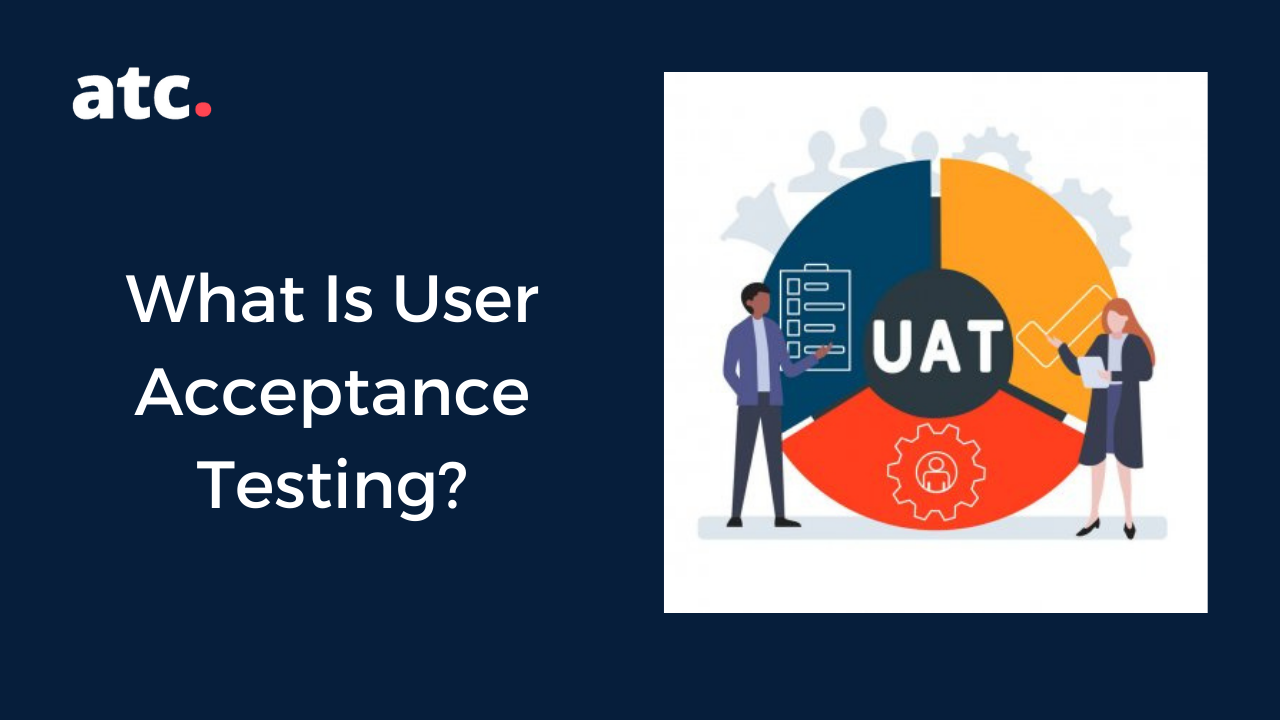Subscribe to the blog
User acceptance testing is the final stop on the way to software release.
Who do you work for?
Hint: It isn’t your company.
No, the person you work for is, above all else, the customer.
So when you’re testing the software the customer has commissioned you to create, you better make sure it works like it’s intended. . Because there are many types of software testing. And they all perform different functions.
In this post, we will discuss user acceptance testing, sometimes called beta testing or end-user testing. It’s the kind of test that puts the customer front and center. We’ll show you what it is, why it matters, the various user acceptance testing methods, and much more.
Let’s get into it.
What is User Acceptance Testing?
Before we can define user acceptance testing (UAT), we have to define its individual parts.
The “user” is either the client who hired you to build them a software product or the consumer you’ll be selling to. And “acceptance” means agreement or approval.
Software testing is, therefore, performed by the user or client to establish whether it’s approved for release or not. UAT is typically the very last test a software undergoes after integration testing, end-to-end testing, and every other form of testing.
Why Does User Acceptance Testing Matter?
When you perform functional tests (which are usually undertaken by quality assurance engineers), you validate the software against functional specs. These are specifications that no one outside of developers fully understands or cares about.
But just because the software functions properly doesn’t mean it will be well-received or enjoyed by its intended audience.
Certain business requirements and processes are only understood by clients or users. That’s why user acceptance testing is so important. Developers tend to develop tunnel vision when working on the same app for long periods of time and can’t evaluate and assess everything, especially the front-end.
The other issue UAT solves is post-release bugs, errors, or bad user experience. These bugs may not show up in other tests but they may become apparent in the app design or flow of features.
Fixing these before the software is released will reduce initial negative impressions or reviews of your software.
What Is the User Acceptance Testing Process?

There is a specific process all software go through in user acceptance testing.
Different DevOps teams will have slightly different processes, but we’ll give you a general 5-step process that most teams loosely follow.
The 5 steps are:
- Planning
- Execution
- Documentation
- Evaluation
- Reporting
Let’s dig into each one at a time.
1. Planning
The first step in the user acceptance testing process is planning.
First, establish your UAT schedule and the QA agents and testers you’re going to need for the duration of the project. A helpful exercise is to draft a concept of what your testing group should look like and work off of that.
Then sit down and decide who exactly will be involved in the execution of UAT, including their roles and responsibilities.
Once that’s done, bring your UAT team together. Make sure everyone understands their responsibilities. Establish clear communication guidelines. And prep them for testing.
During the UAT process it’s important to follow a specific workflow so you can effectively manage bugs, errors, and other defects or problems.
So ahead of time, settle on how you’re going to document problems and how testers will communicate the problems you want documented.
2. Execution
There are a variety of ways you can handle the execution of UAT. One way is to bring the testers to your facility and have them perform the testing there. However, if you’re selling the software to end users around the globe, then you probably won’t be able to meet your testers in person.
In that case, conduct one-on-one sessions with them via Skype or Zoom or some other online telecom software. This will give you tons of quantitative and qualitative data from users.
You’ll discover insights that you’ve never considered, you’ll gain a better understanding of how savvy your end user is already, and you’ll be better positioned to change or tweak all the necessary aspects of your software to make it excellent.
3. Documentation
While executing UAT, you should also be documenting your progress. Make sure whatever you use allows you to record bugs, user feedback, abnormalities, and any other significant observations.
And keep in mind the objectives of UAT when documenting progress:
- Confirm the software performs business functions (as intended).
- Confirm the software is useful and usable from the end user’s perspective.
- Confirm the software is compliant with regulatory and other legal requirements.
- Certify that the software is ready to move to production.
4. Evaluation
It’s at this phase you need to evaluate whether or not the criteria has been tested and met.
This is the most extensive phase of UAT because you’re collecting, aggregating, and analyzing data.
You should strive to answer the following questions:
- Which tests failed (if any)?
- What problems occurred?
- Who is responsible for the problems and can they be resolved?
- How many testers completed the test case?
- What was the rating of the test cases?
- What was the state of mind of each tester?
- What emotional state was each tester in?
The reason these questions need to be answered is because it gives you context for the results of the tests. That context tells you how your real end users will interact with and experience your software in a variety of mental and emotional states.
5. Reporting
This is the phase where you evaluate the bigger picture of UAT. The lessons learned and insights gained. It’s this data, after everything is said and done, that allows you to improve future test cases and optimize your UAT workflow.
What are the Roles and Responsibilities of the User Acceptance Testing Team?
A typical UAT team consists of a business program manager, UAT test manager, and UAT test team.
We’ll cover each one below.
Business Program Manager
The business program manager is responsible for reviewing and approving the UAT test strategy and plan. They’re also accountable for ensuring that the UAT process is completed on schedule and on budget. They also monitor the progress of the project and work side-by-side with business operations.
UAT Test Manager
The UAT test manager will actually formulate the UAT strategy and plan. They’ll also review and approve test scenarios, test cases, and deliver weekly status reports.
And if you’re using a new or improved workflow, they’re in charge of driving metrics collection to measure the benefits of the testing methods, tools, and environment.
UAT Test Team
The UAT test team prepares and executes the UAT test plan, including test scenarios, test cases, and test data. It’s their responsibility to verify and validate business if requirements are being met and defects are being reported. They also create test logs and test summaries.
System Testing Vs User Acceptance Testing
You may be confused about the difference between system testing vs user acceptance testing.
We’ll clear up your confusion by walking through the exact differences below.
| System Testing | User Acceptance Testing |
| Used to check if the software meets business requirements. | Used to check if the software meets user requirements, user story, user needs. |
| Performed by developers and testers. | Performed by independent testers, end users, stakeholders, and/or clients. |
| Incorporates functional and non-functional testing. | Is purely functional. |
| Tests how the software performs as a whole. | Tests the usefulness and usability of the software. |
| Performed with demo data. | Performed with real-time, production data. |
| Comprises system testing and integration testing. | Comprises alpha and beta testing. |
| Performed before acceptance testing. | Performed after system testing. |
| Involves performance, load, and stress testing. | Involves value analysis, equivalence partitioning, and decision table testing. |
| Contains more negative test cases. | Contains more positive test cases. |
| Defects found can be fixed based on priorities. | Defects found are taken as the failure of the software product. |
| Tests the software for possible dummy inputs. | Tests the software for random inputs. |
User Acceptance Testing Methods
Now that you know what acceptance testing is and what it’s not, let’s take a look at the various types of UAT tests you can run.
We’ll dive into the following:
- Alpha Testing
- Beta Testing
- Contract Acceptance Testing
- Regulation Acceptance Testing
- Operational Acceptance Testing
Alpha Testing
Alpha testing is performed to find all the possible bugs and errors in your software before you release it publicly.
The purpose is to simulate real users, so testers are tasked with carrying out normal tasks that regular users will be doing. These tests are typically conducted in a lab environment by the development team.
Beta Testing
Beta testing is performed by real, regular people. Actual end users of the software in a “real environment” - meaning, outside of a lab in the environment(s) the software would be used normally if it was commercially available.
A limited number of users will be allowed to access and use the software for a specified period of time. You’ll gain valuable feedback from them about the product’s quality and functionality.
The purpose of beta testing is to reduce risks of failure and provide a high quality product through customer validation. This is pretty much the final test before releasing the software.
Contract Acceptance Testing
Contract acceptance testing is when software is tested against particular specifications and criteria agreed upon in your contract. The development team defines the criteria for acceptance for the contract itself to establish the specs they’ll need to meet in the final product.
Regulation Acceptance Testing
Regulation acceptance testing, otherwise known as compliance acceptance testing, examines the software to make sure it complies with regulations governing your industry.
Operational acceptance testing
Operational acceptance testing, also known as production acceptance testing, helps ensure that workflows are in place to allow software to be used effectively.
This includes backup plans, user training, maintenance processes, security checks, and so on.
Best Practices of User Acceptance Testing
Here are the best practices for conducting a successful UAT:
- Know your target audience: Always determine your target audience; know their expectations and problems. It is crucial that you choose actual users for UAT as the developers shouldn't be party to it. Feedback received in this manner is therefore unadulterated and goes a long way towards future upgrades.
- Form a test plan: Your testing procedure must have a guide. The test plan fulfills this role by elaborating on the scope, objectives, and schedule of the UAT. Focus on minimizing roadblocks to the testing process and ensure all user problems and queries are responded to promptly. Keep your technology partners on standby to facilitate rapid resolution of issues.
- Prepare a test case: A test case functions as the base documentation that defines the procedure conditions and inferences that a tester needs to check. The purpose here is to ensure the application is working as expected. With a comprehensive test case, testers will be focused on the right areas. Remember it is critical for test cases to be meticulously structured and detailed for clarity.
- Bug reporting: Bugs are common in even the best-tested software and as such, the most effective way of minimizing them is to keep proper records as and when they occur. This helps developers to avoid them in future applications. Screenshots are a good way of keeping track for reference.
- Definitive acceptance criteria: Approval criteria must be clear and transparent to prevent confusion and unnecessary rework, leading to missed deadlines and/or confusion.
How to Make User Acceptance Testing Work for You
You know you need to run user acceptance tests. But it’s not as simple as just running the tests we just covered.
If you don’t have the right people running the tests, you won’t get the best results. Finding and hiring the right in-house developers and testers is a headache (and cost) that you probably don’t want to deal with.
And you don’t have to. We can manage your testing for you.
But first, fulfilling certain prerequisites to user acceptance testing would ensure an ultimately successful test. These prerequisites are as follows:
- Business requirements must be clearly communicated to the testers.
- A system mostly free of errors that would otherwise affect testing.
- Unit, system, and integration testing must be done and the errors reported should be fixed preceding UAT.
- Carry out regression testing to ensure any recent changes to the code do not have adverse effects on the application.
With our managed testing services, you get:
- Fully customizable and scalable services for enterprise or program level requirements.
- Processes and environments needed to overcome testing challenges and achieve optimal results.
- Frameworks, tools, and most of all, highly trained staff in order to provide comprehensive support for your organizational goals.
Plus, we can handle the “big 6” of testing:
- Security.
- Performance.
- Regression.
- Functional.
- Compatibility.
- And test automation.
On top of handling user acceptance testing.
Reach out today for reliable and effective software testing management.




